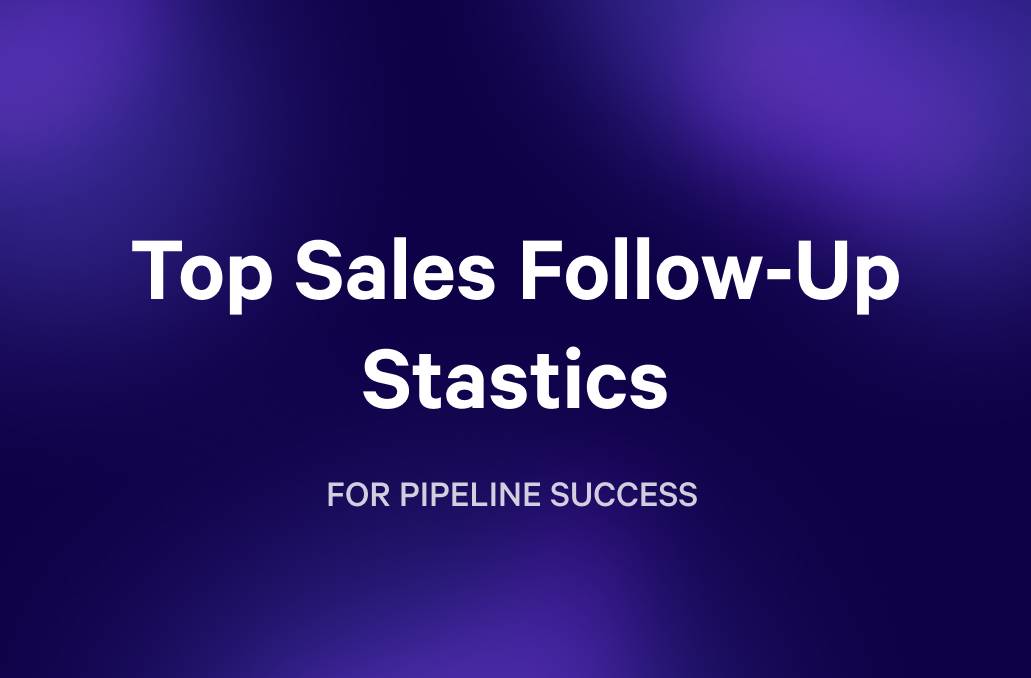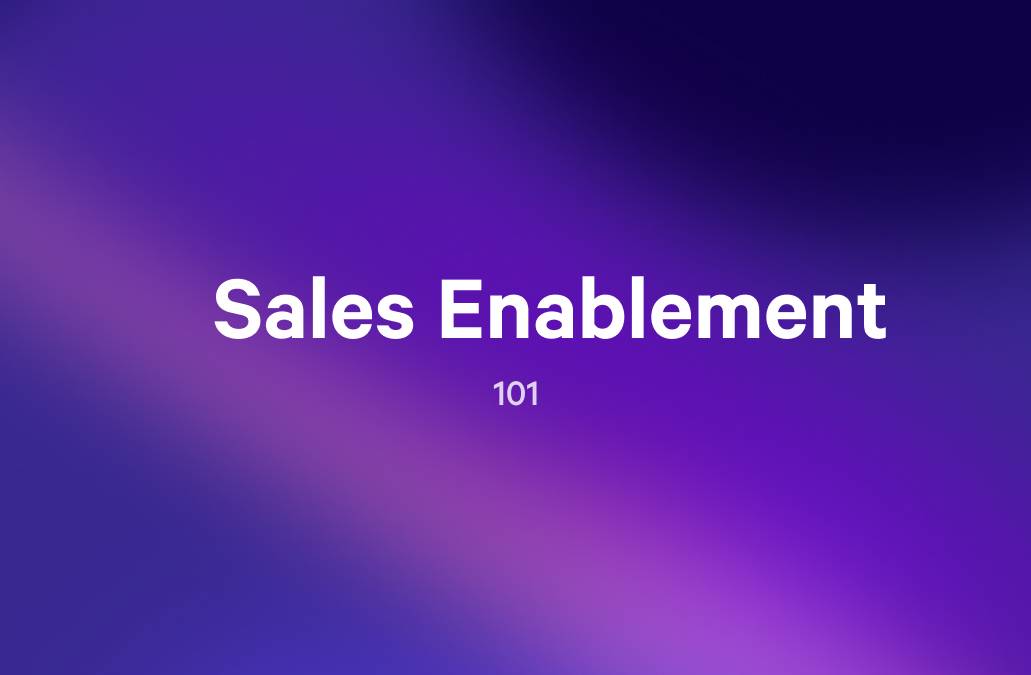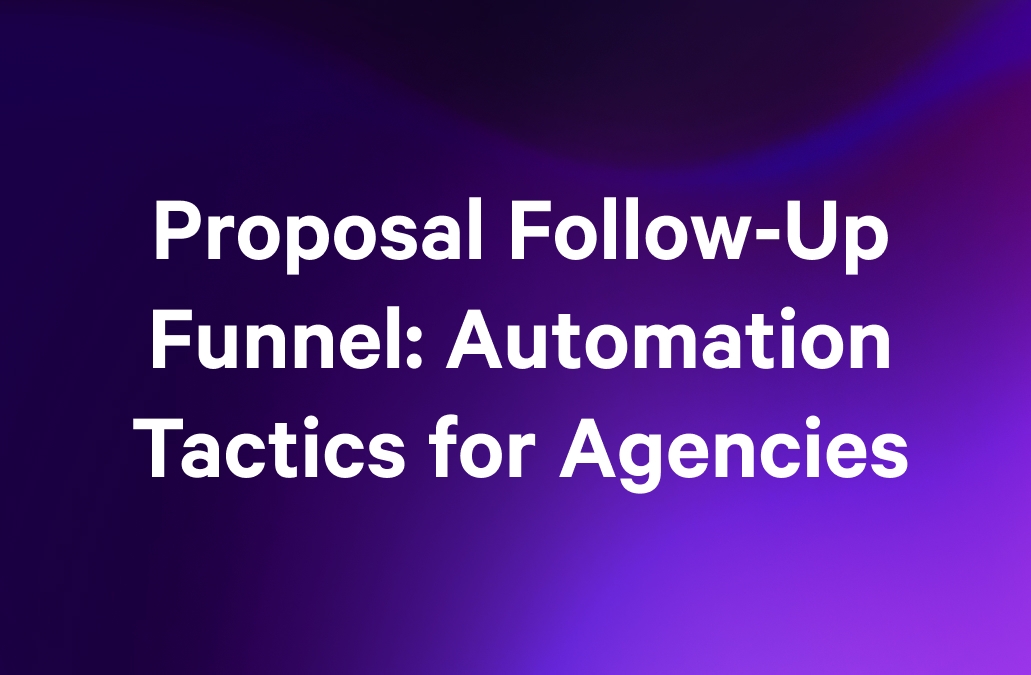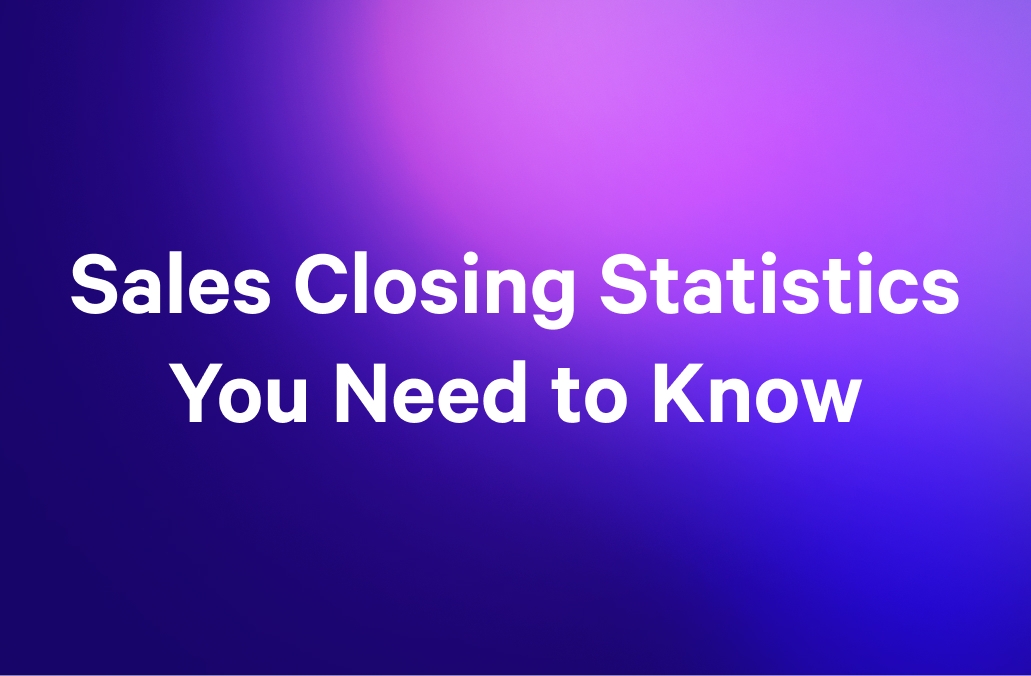In the fast-paced world of sales, the difference between a missed opportunity and a closed deal often comes down to one critical element: the follow-up.
Far from a mere check-in, the follow-up is a strategic art form, requiring precision, timing, and a deep understanding of your prospect's needs. Today, we're diving deep into the intricacies of effective sales follow-ups, armed with the latest statistics and insights that underscore their power during the deal process.
Key takeaways:
- Persistence in sales follow-ups is crucial, with 80% of sales requiring 5-12 contact attempts.
- Timing is key in follow-ups, with immediate responses and strategic call times enhancing success.
- Technology, particularly AI, can optimize follow-up strategies and free sales reps for more strategic tasks.
- A balanced follow-up cadence, emulating high-growth organizations, can maximize conversion rates.
- Tailoring follow-up content to buyer preferences and integrating dynamic content like videos can boost engagement and conversions.
The art of persistence in sales follow-up
Persistence is the backbone of effective sales follow-up. It's the relentless pursuit that separates the successful reps from the unsuccessful.
Let's explore the pivotal role of persistence in sales follow-up:
Persistence pays off: Just 2% of sales occur on the first contact, emphasizing how many deals are left on the table without persistent follow-up efforts [1]. Yet, the journey to sales success requires relentless pursuit, with 80% of sales needing between 5 to 12 contact attempts before closing [2]. This statistic underscores a clear message: persistence isn't just beneficial; it's essential.
Reps' reluctance: Despite the clear benefits of follow-up, a staggering 48% of sales reps never make a second follow-up call [3]. This significant drop-off after the initial attempt not only leaves potential sales on the table but also signals a crucial area for improvement within sales teams. Often, this reluctance to make a second call may be tied to a fear of rejection. Sales reps may shy away from potential negative responses, choosing to avoid the possibility of hearing 'no' again. However, overcoming this fear is key to successful follow-ups and ultimately, successful sales strategies.
These sales training statistics paint a clear picture: mastering the art of persistence is key to unlocking the full potential of your sales strategy. But persistence alone isn't enough. Timing plays a crucial role in the success of your follow-up efforts. By leveraging these statistics, sales teams can better understand the optimal times and methods for follow-ups, enhancing the effectiveness of their training and ultimately boosting sales outcomes.
Timing is everything: When to follow-up for best results
The timing of your follow-up can make or break your chances of success. Let's delve into the importance of timing in sales follow-ups:
Speed to lead: The velocity of follow-up can have a profound impact on conversion rates. Engaging leads within 60 seconds of inquiry can boost conversion rates by almost 400%, a figure that underscores the importance of immediacy in sales strategies [4]. This statistic emphasizes the crucial role of immediate response in sales. A prompt follow-up captures the lead's attention when their interest is highest, increasing engagement and conversion chances.
Moreover, a swift response helps a company distinguish itself in a competitive market, showcasing its efficiency and dedication. Thus, speed in follow-up is not just about contacting leads; it's about seizing the opportunity at the right moment, enhancing sales strategies' effectiveness.
Optimal cold call times: Identifying the right moment for follow-up attempts can significantly enhance their effectiveness. Research suggests that early mornings (8:00 AM – 10:00 AM) and late afternoons (4:00 PM – 5:00 PM) are prime times for making successful cold calls [5]. These optimal timings are not only advantageous for reaching out to the prospects but also strategically beneficial in circumventing gatekeepers such as receptionists or personal assistants, who are usually less likely to screen calls during these early and late hours.
Furthermore, these times often coincide with when potential prospects are less busy, thus increasing the chances of having meaningful conversations. Early morning calls can catch prospects before their day becomes hectic, while late afternoon calls can capitalize on the wrap-up time when they are finalizing their tasks for the day.
As sales enablement statistics indicate, timing is a critical factor in the success of your follow-up efforts. But in today's digital age, technology also plays a pivotal role in enhancing the effectiveness of your follow-up strategy. By analyzing these statistics, organizations can invest in the right tools and technologies that align with their sales cycle, ensuring that their follow-up tactics are not only well-timed but also fully optimized for maximum engagement and conversion.
Technology's role in enhancing follow-ups
In the digital era, the best sales tools and new technology is a game-changer for sales follow-ups.
Investment in sales enablement tooling: 55% of C-suite leaders have identified sales enablement tools as their companies' most important technology investment [6]. This reflects a growing recognition of their value in driving revenue and competitive advantage. The modern sales landscape is increasingly influenced by sales tech, which plays a critical role in optimizing sales strategies. These tools not only streamline sales processes but also ensure that sales teams can engage leads with more precision and relevance.
AI applications for following up: 78% of sales professionals agree that AI can free them to focus on more strategic aspects of their roles, highlighting its value in enhancing follow-up strategies [7]. AI algorithms can analyze lead behavior, allowing sales reps to tailor their follow-up messages for increased impact. These algorithms can also predict ideal contact times, ensuring that leads are reached at the most opportune moments. Additionally, the best AI tools can automate repetitive tasks, such as sending follow-up emails or scheduling calls, saving time and ensuring every lead receives a follow-up. You can even use AI proposal generators to easily personalize follow-ups.
As sales statistics reflect and AI technology continues to evolve, its role in sales follow-ups will likely expand, offering more ways to engage leads effectively and stay competitive in the digital sales landscape. With technology enhancing the precision and personalization of follow-ups, it's clear that a strategic approach to frequency and cadence, informed by these sales statistics, is also essential for maximizing conversion rates. The data derived from sales statistics helps in fine-tuning the AI algorithms to better predict the optimal times and methods for engaging with potential customers.
Other technology that can help streamline and increase sales performance include:
- Proposal automation software
- Document automation software
- Remote sales tools
- Sales tools for startups
- Sales engagement software
- Quoting software
- B2B sales tools
Optimal follow-up cadence for maximum conversion
Finding the right cadence for your follow-ups is crucial for converting leads into sales.
Follow-up frequency: Securing a conversion or meeting typically necessitates between 5 to 8 follow-up touches, underscoring the strategic importance of not just the quantity but the timing and quality of these interactions [8].
Cadence impact: Emulating high-growth organizations can be insightful, where the strategy involves up to 16 touchpoints over a 2-4 week span. This statistic illustrates the effectiveness of a comprehensive follow-up strategy, balancing persistence with tact to avoid overwhelming prospects [9].
Understanding the preferences and reactions of your buyers is another crucial element in crafting an effective follow-up strategy.
Understanding buyer preferences and reactions
To effectively engage with your prospects, it's essential to understand their preferences and reactions. Let's explore what buyers expect and how they react to follow-up efforts.
Online buyers' expectations: In the digital age, buyer expectations have evolved, with 75% of online buyers expecting between 2 to 4 phone calls before they write off a potential deal. This preference highlights the importance of tailored follow-up strategies that resonate with buyer expectations and patience levels [10].
Prospects' satisfaction: Despite efforts to engage, a significant 85% of prospects express dissatisfaction with the phone contact attempts they receive. This feedback points to a crucial need for sales teams to refine their follow-up approaches, ensuring that each interaction adds value and is tailored to the individual prospect's journey [11].
As we've explored, tailoring your follow-up content to the preferences of your buyers is key to enhancing satisfaction and conversion rates. Let’s delve into some effective content strategies, informed by sales coaching statistics. These statistics shed light on the impact of various coaching techniques on sales outcomes, emphasizing the importance of content personalization. By understanding which strategies yield the best results, sales teams can optimize their follow-up efforts to align with what buyers respond to most positively.
Crafting effective follow-up content
Creating compelling follow-up content is vital for capturing your prospects' attention and driving conversions.
Video content engagement: With video content consumption up by 200% in the past two years, integrating video into follow-up strategies can significantly enhance engagement and conversion rates [12]. Nearly 50% of sales reps acknowledge the role of video content in closing deals, signaling the shift towards more dynamic and interactive follow-up content [13].
Personalized email strategy: Personalization continues to be a key differentiator in follow-up strategies. Using a greeting like "Hello" in email follow-ups can positively impact open rates by up to 41%, suggesting that a friendly and personalized approach can significantly influence the effectiveness of email follow-ups [14]. Personalization can even be taken one step further by tweaking a sales proposal template to be more personal to your prospect.
Using sales proposal software like Qwilr gives you access to a variety of proposal templates like SaaS proposal templates, software development proposal templates, Google ad proposal templates, enterprise sales templates and more.
References:
[1], [9] - IRC Sales Solutions
[2] - Julian Mills
[3], [10] - Invesp
[4], [5] - Lusha
[6] - LXA
[7] - Qwilr
[8] - Rain Group
[11] - Spotio
[12] - Trujay
[13] - Vidyard
[14] - Sopro
Final thoughts
In conclusion, mastering the art of the follow-up is a multifaceted challenge that requires persistence, timing, technology, strategic cadence, understanding of buyer preferences, and effective content.
By leveraging these insights and approaches, sales professionals can significantly enhance their follow-up strategies, leading to higher conversion rates and successful closures. Remember, the key to maximizing sales through strategic follow-up lies in not just making contact, but making the right contact at the right time and in the right way.
About the author

Brendan Connaughton|Head of Growth Marketing
Brendan heads up growth marketing and demand generation at Qwilr, overseeing performance marketing, SEO, and lifecycle initiatives. Brendan has been instrumental in developing go-to-market functions for a number of high-growth startups and challenger brands.
Frequently asked questions
Persistence is crucial in sales follow-up as it separates successful reps from unsuccessful ones. Just 2% of sales occur on the first contact, and 80% of sales need between 5 to 12 contact attempts before closing. Therefore, persistence is essential.
The timing of your follow-up can significantly impact your success. Engaging leads within 60 seconds of inquiry can boost conversion rates by almost 400%. Also, early mornings and late afternoons are prime times for making successful cold calls.
Technology, especially AI, can enhance follow-up strategies by analyzing lead behavior, predicting ideal contact times, and automating repetitive tasks. 55% of C-suite leaders identify sales enablement tools as their companies' most important technology investment.
Securing a conversion typically requires between 5 to 8 follow-up touches. High-growth organizations use up to 16 touchpoints over a 2-4 week span, balancing persistence with tact to avoid overwhelming prospects.
Integrating video into follow-up strategies can enhance engagement and conversion rates. Personalization in email follow-ups, like using a friendly greeting, can positively impact open rates by up to 41%.









